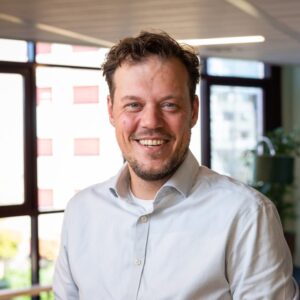I used to be on the other side of the table. So, when I walk in the door as an APM consultant I understand it well if the maintenance staff is wary or maybe even concerned. Especially since I often start out with an assessment, something we call an Asset Improvement Mapping. I imagine that the workforce might be concerned about their jobs or that they do not want to change their way of working or that they simple had a bad experience with consultancy firms in the past. Whichever reason they have for their hesitance, I consider it one of my responsibilities to refute these beliefs and get their cooperation.
Maturity level and roadmap
It’s good to explain how an Asset Improvement Mapping (AIM) works. With a typical–size site, we interview around 25 stakeholders, a cross-section of the organization (going wider than just maintenance). We do a plant walkdown, analyze data and information and use all of these inputs to do our AIM across fourteen competences in three dimensions (management, maintenance and reliability). The outcome is an asset management maturity level and a fitting roadmap to take steps in improving asset performance. In short: a bird’s-eye view of the plant.
Turning point
As you might expect, for some their wariness stems from the fact that we assess a lot of different aspects and speak to many people within an organization. During the six weeks that it approximately takes to complete an assessment, I usually see perspectives changing gradually. The site team sees that MaxGrippers know their stuff; we have worked at manufacturing or other industrial companies and we see the inner workings of many similar businesses. With our way of working becoming clearer they also understand that their individual performance is not audited but that we want to help improve the overall company.
Owning the improvements
Another fact that helps tremendously is that our client gets the chance to take ownership as soon as possible in the process. We don’t give them a report, wish them good luck and leave; MaxGrippers do the assessment but together we analyze the findings and recommendations. Our client, usually the maintenance manager, is in the driver’s seat of the improvement roadmap (together with other important stakeholders like the plant manager); we are merely riding along as a passenger, offering insights and advice.
You could say that the AIM is more than only an assessment as it also offers a way to take the first steps in changing a way of working and culture. For me, making the plant manager, the workforce and others see their potential to improve is one of the things that makes my work interesting.
Justin Satink
Senior consultant
Get inspired
A discussion on reliability metrics, specifically on Mean Downtime, or MDT, and how to use this metric to your advantage.
This article provides an overview of MTBF and outlines how to use this knowledge to calculate, improve, and use these metrics for building KPIs.
How will digital transformation take form for industrial companies and how will it transform asset performance management?





